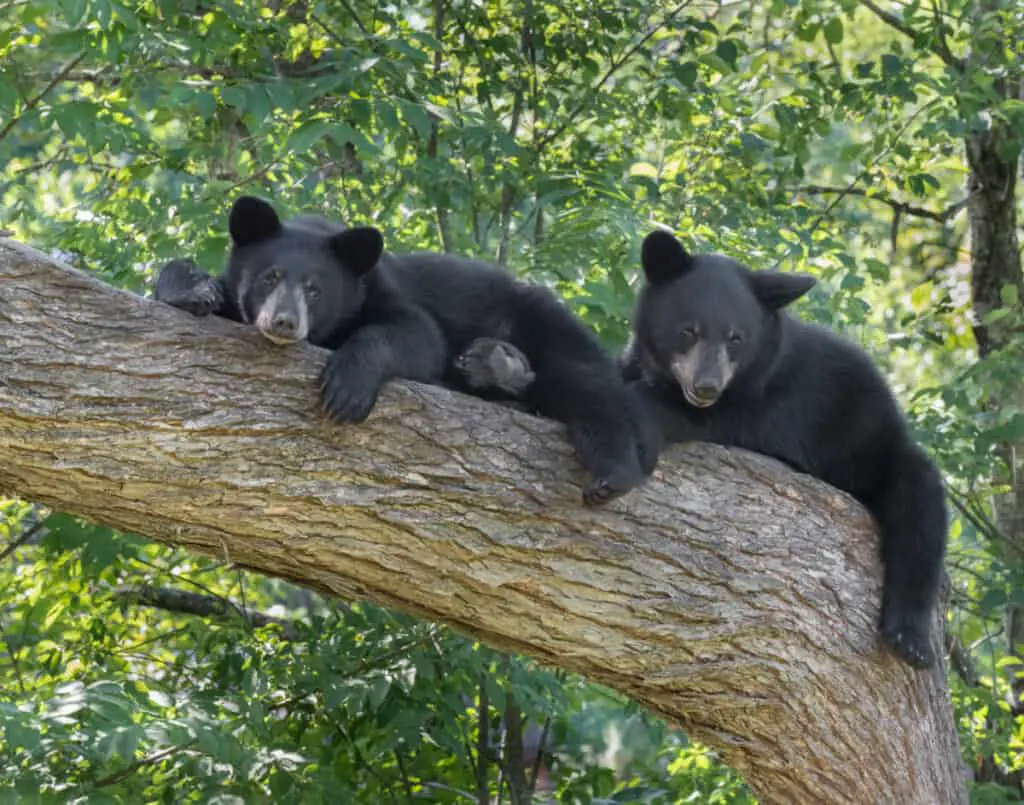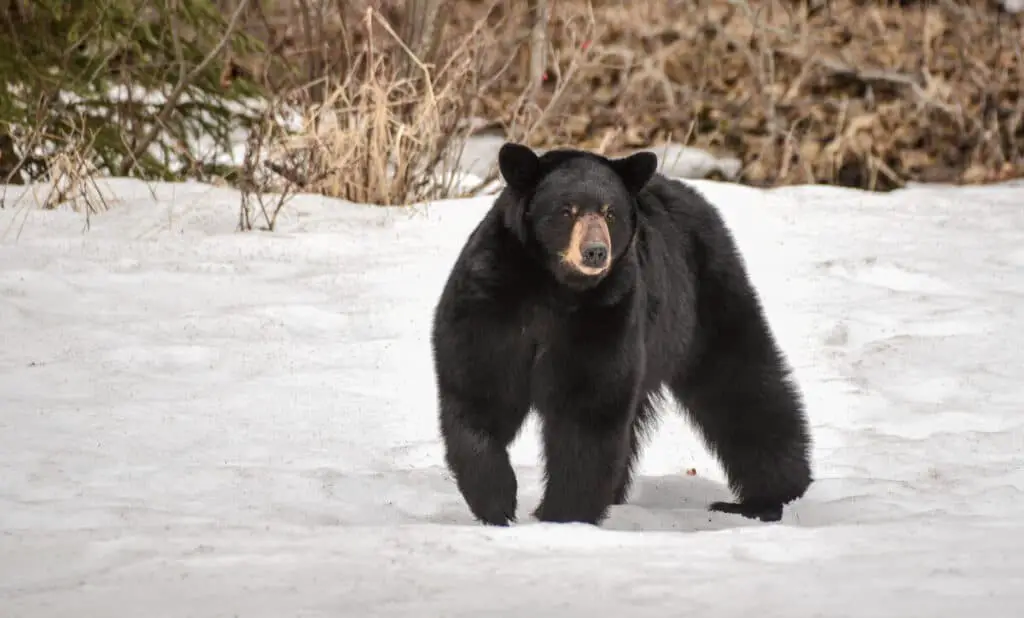American black bears (Ursus americanus) are the most abundant bear in North America. While they may appear solitary and elusive, these animals communicate with one another using a variety of vocalizations.
This article will explore what sounds American black bears make, how such calls are used for communication, and what their meanings might be. This research was conducted by observing wild populations of American black bears living in various regions across the United States.
In addition to direct observation, recordings were made from radio-collared individuals that provided further insight into the acoustic properties of each sound type produced by this species. The results suggest that American black bears use different types of vocalizations depending on context and social setting; however, more research is needed to fully understand the purpose of each call.

Overview Of American Black Bears
American black bears are large mammals that inhabit much of North America. They have a sturdy build, with short legs and curved claws perfect for climbing trees, which they often use to escape danger or simply rest.
Their fur ranges in color from tan to dark chocolate brown, and their faces can be adorned by white muzzles and light-colored collars around the neck.
These omnivorous animals display remarkable adaptation skills as they search for food sources both on land and water. Black bears feed mainly on fruits, nuts, insects, and other small creatures, but will also scavenge carrion when available.
In addition to foraging habits, mating behavior is another defining characteristic of these majestic creatures; males typically mate with multiple females during peak breeding season that runs from June through July each year.
Types Of Vocalizations
American black bears are generally quiet animals and do not produce a wide range of vocalizations. However, they can make certain sounds for communication or defensive purposes. Here’s a table of common sounds made by American black bears:
| Sound | Description |
|---|---|
| Huffs and Puffs | Forceful exhalations through the nose or mouth. |
| Growls | Low, deep vocalizations indicating aggression. |
| Woofs | Short, sharp barks used to warn or intimidate. |
| Chuffs | Soft, non-aggressive sounds made during interactions. |
| Roars | Loud, deep vocalizations used for territorial display or threat. |
| Grunts | Soft, throaty sounds made during social interactions or when startled. |
American Black Bears can produce a variety of vocalizations, including predator warnings, courtship calls and contact calls. These sounds help the bears identify each other in their home range, maintain social bonds between family members and alert intruders.
The most common sound made by American Black Bears is a low growl or “grunt” used to express displeasure or aggression. When alarmed, mothers with cubs may also make loud blowing noises as a warning signal for predators or potential threats. In addition, males use loud roars during the breeding season that are thought to be used as courtship calls. They also emit high-pitched squeals when greeting one another or reuniting after being separated.
Other types of vocalizations include chuffing, which is a soft huffing sound often made during friendly interactions; whimpering noises when searching for food; and honking noises heard primarily from mother bear cubs.
These diverse vocalizations play an important role in both communication and survival among American black bears. For example, many cubs learn to recognize their mother’s call so they can find her quickly if they become separated while playing in dense forest regions. Additionally, adults rely on these various sounds to stay informed about the presence of nearby predators and possible mates in their area.
Bears’ Natural Foes: Unraveling the Predators
Roars
American black bears are renowned for their iconic roars, which make them one of the most recognizable predators in North America. It’s almost as if their deep bellow is a call to arms or a warning to other animals that they have arrived. Roars produced by American black bears serve multiple purposes, such as predator-prey interactions and bear-human encounters.
When used between two American black bears, roaring usually serves as an indicator of dominance and territoriality. Bears may roar to show aggression towards another animal encroaching on its space while also intimidating it into retreating from the area. As large mammals with significant strength, these kinds of displays often act as effective deterrents against potential adversaries.
In addition, male American black bears will sometimes use loud vocalizations during mating season as part of their courtship rituals.
In terms of bear-human interactions, growling and roaring can be seen as a form of communication between species. If startled or threatened by humans, an American black bear might respond with a low menacing growl meant to ward off any perceived danger. Studies suggest that loud noises like clapping hands or shouting can help scare away aggressive wild animals in some cases since they view these sounds as possible threats from competing predators.
While human-bear conflicts should always be avoided whenever possible, understanding how different sounds and behaviors can affect both parties’ behavior is vital knowledge for those who live near areas inhabited by American black bears.
Chuffs
Chuffs are sounds made by American black bears. These vocalizations can range from clucking to huffing and even snorting, depending on the situation in which they occur.
Chuffs often take place during non-aggressive interactions between two or more individuals, such as when mother bear communicates with her cubs or when male bears engage in mating rituals. In addition, chuffs may be used for communication between distant members of a family group or between unfamiliar bears who have come upon each other’s territories.
Hibernation behavior can also influence chuffing among black bears. During hibernation season, females will emit low volume chuffs as an indication of their presence and readiness to mate if a potential partner is nearby. Males may similarly use chuffing to announce their availability before engaging in courtship behaviors.
As a result, researchers suggest that these vocalizations may serve as both territorial claims and invitations for social interaction among American black bears throughout different stages of their life cycles.

Woofs
The American Black Bear’s vocalisations are varied and complex.
After chuffing, the bear will often communicate using growls and/or woofs to indicate its presence or express dominance in a situation.
Growling is typically louder than chuffing, with deep tones that can range from low grunts to full-throated roars.
These loud noises are used as warnings and may be accompanied by bluff charges or other aggressive displays of power.
In addition, the bear’s repertoire includes whistles, which are high pitched sounds similar to bird calls that may be used for communication between cubs and their mothers or when courting potential mates.
In some cases, bears have been observed making distinct sound combinations depending on the context of the encounter with another animal or human; this suggests an ability to interpret environmental cues and act accordingly.
Furthermore, recent studies have found evidence of regional dialects amongst black bears in different areas – variations in intonation that appear to serve as recognition signals among individuals living within close proximity of each other.
It appears clear then, that American Black Bears use a rich array of vocalisations for both communication and territorial marking purposes.
Grunts
American black bears are known to produce a variety of vocalizations, including grunts. Grunts can be used in many situations and have different meanings depending on the context.
For example, when an American black bear is looking for food or defending its territory it may make a deep guttural grunt that can be heard up to half a mile away. These loud grunts are also used during mating season as aggressive posturing and territorial displays by males competing for females.
In addition to these defensive and aggression-related grunts, American black bears use softer grunts for communication between family members. They often communicate with their cubs through gentle grunts which act as food signals like warnings about predators and directions towards sources of food.
Mating calls tend to take the form of lower pitched grunting noises coupled with head bobbing motions so they may appear more intimidating to potential mates.
Conclusion
The American Black Bear is an iconic species of North America, and its vocalizations are as unique as the creature itself. These vocalizations include roaring, chuffing, woofing, and grunting. Each call serves a purpose in communicating with other bears or warning away potential predators.
Though these sounds may seem intimidating to some humans, they are actually part of the normal behavior for this species. Like many animals, black bear communication is essential for survival within their environment; it allows them to live harmoniously amongst each other without physical confrontation.
The soundscape created by these calls provide insight into the inner workings of one of nature’s most amazing creatures – like an orchestra playing a beautiful symphony that only wild things can appreciate.

